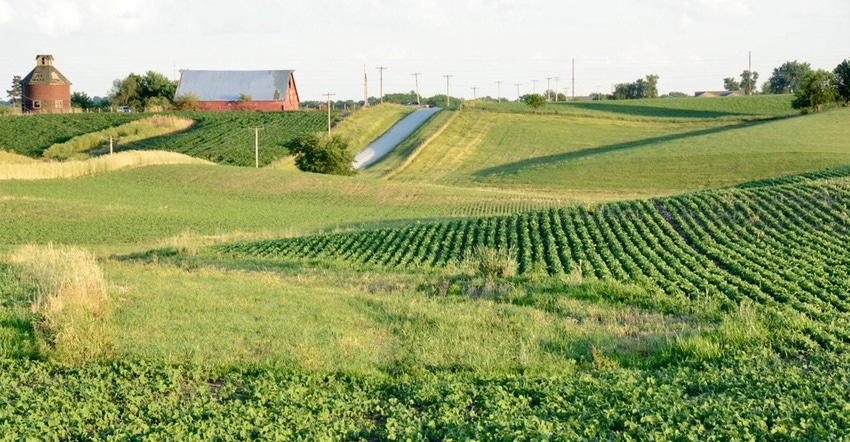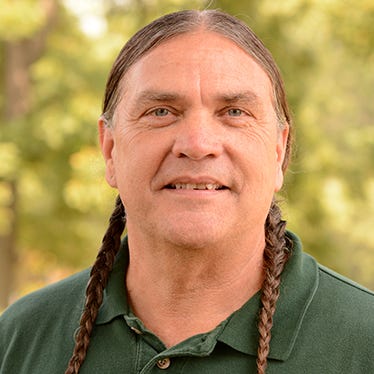August 17, 2017

One of my favorite movies is “Forrest Gump.” Forrest is one of those guys who doesn’t appear to put much thought into anything. There’s one scene where, after he’s stumbled onto a profitable investment, he happily says his momma said now they didn’t have to worry about money anymore. Forrest proclaimed, “That’s good. One less thing.”
What does Forrest Gump have to do with conservation? Well, there are so many things we can’t control when it comes to farming. Farmers are busy people who manage multiple issues and problems every hour of every day. By September, the crops aren’t even all the way out of the field, but I know many of you are already thinking about preparing for next year’s crop. Oftentimes, that field preparation includes tillage. You know you should keep the ground covered — but if conditions are good after harvest, then why not take advantage and get a jump on next year?
Sometimes tillage feels like just one more thing. But what if it could be one less thing?
Like with many farming issues, there are pluses and minuses with tillage. If you compare it to our own digestive process, tillage is like chewing. It breaks apart large chunks of crop residue and creates more surface area where soil microbes begin breaking residue apart even more quickly. That process releases nutrients and reduces the former plant into more elemental stages. When tillage becomes the normal operation, we accelerate this process to the point that we can even start losing organic matter that had been accumulating in the soil for many years. Over time, we can cause the entire chemistry of the soil to change. We are at that point right now in Illinois.
Let’s forget about that long-term change of soil chemistry and lost soil carbon right now. Take a moment to think about the short-term, positive impacts of reduced tillage. I don’t use the term best management practice, or BMP, because I don’t think it accurately describes a more complex, prescriptive decision-making process for selecting conservation practices (but forgive my tangent, that’s another story). Conservation tillage may indeed be one of those practices that is so versatile, it can be used — more precisely — on every acre. In this part of the country, keeping more surface residue helps protect the soil from erosion by water, increases infiltration, reduces runoff, suppresses weed growth, builds soil organic matter, helps sequester nutrients and improves soil health. That’s a pretty darn good conservation practice.
Hold off the dust storm
Let me provide another example we experienced just this past growing season where that urge to till right after harvest — or maybe during a warm winter stretch — had unexpected effects. Good postharvest conditions and then mild temperatures and favorable field conditions had some farmers doing field preparation work in February. Because of the accelerated decomposition of residues described earlier, when the wet spring suddenly turned dry right after planting, those bare soils were even more vulnerable to strong spring winds. Those conditions created some unique dust storms. I had several calls from residents in rural-urban interface locations who experienced the mess left by blowing dust. There were some cases where reduced visibility on the roads created dangerous conditions. Maybe that’s just one more thing to worry about with tillage.
You can change your thinking about fall tillage if you stop and think about what you’re doing and why. Do you really need to run all those passes over your fields? It’s a lot of time and fuel. What are you actually accomplishing? Are you helping your soil resources, or are you destroying the natural structure that will protect the ground and hold it safely in place until next spring?
I urge you to visit your local Natural Resources Conservation Service office. Ask the staff to run the latest soil loss calculator for your operation. You can virtually try out different tillage (or no-tillage) options to see the predicted results and help you make the right decision for your farm. We can even talk about programs like the Environmental Quality Incentives Program that can help offset the cost of switching tillage systems, or the Conservation Stewardship Program that gives credit for conservation efforts you have in place and offers an incentive to kick those practices up to another level.
I know many Illinois farmers who don’t think of conservation as an extra step. They regularly incorporate conservation techniques into their operation because they see time spent practicing conservation as an investment that saves time and money. Farmers who take extra steps to protect and nurture their soil often have less to worry about and fewer problems to fix.
And that might mean one less thing you have to worry about.
Dozier is the Illinois state conservationist. Direct comments or questions to [email protected].

Ivan Dozier
About the Author(s)
You May Also Like




